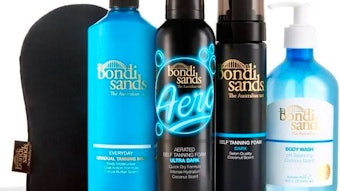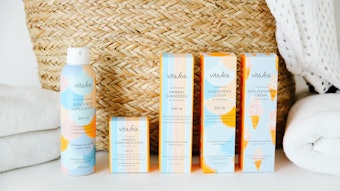
Moving into the summer season, sun care is always a hot topic. But this year, the conversation has changed. The sun care category took a hit in 2020, impacted by shelter-in-place orders and cancelled vacation plans due to the COVID-19 pandemic. Then, in December 2020, the brand Purito was involved in a controversy over a formula marketed at SPF 50 that only produced SPF 19 results. More recently, Gwyneth Paltrow displayed inadequate sunscreen application techniques in a Vogue video. In light of 2020’s losses and widespread misinformation, what steps can brands take to alleviate consumer concerns and reinvigorate the sun care category?
Special Report: Sun Care's Next Chapter
1. Proper Testing
Establishing a thorough testing policy with an expert trained in OTC drug regulations mitigates turmoil. The standard recommended testing for cosmetic formulas—including stability, package compatibility, microbiological, preservative efficacy and safety—also applies to sunscreen formulas.
The Food and Drug Administration (FDA) outlines analytical in vivo and in vitro testing in the Code of Federal Regulations (CFR) Title 21 for sunscreen drug products launched in the United States.
Customers detect a brand’s sense of confidence and expertise when addressing analytical test results.
The minimum 10-panelist in vivo SPF value and water resistance testing determines the correct SPF value and 40- or 80-minute water resistance claims. The SPF value should not change after 40 or 80 minutes of alternating water immersion and drying techniques in a procedure outlined in CFR 21.
The in vitro broad-spectrum test measures the “transmittance/absorbance of ultraviolet (UV) radiation across both the UVB and UVA regions of the spectrum” for a sunscreen formula. Several reputable third-party testing facilities are equipped to perform the testing and produce reports to FDA standards.
Most people only apply 25-50% of the recommended amount of sunscreen.
Due to the high costs of testing, these companies may recommend initially conducting three-person panels to get a read on the SPF value prior to conducting the full 10-panelist test.
The brand’s regulatory expert may advise additional testing, including active ingredient validation, microbiological assay on the bulk prior to filling as well as testing on the first three production batches, which are all part of good manufacturing practices. In addition, the regulatory expert may advise on testing to substantiate specific claims such as “dermatologist tested” or “phthalate-free.”
2. Customer Assurance
Rather than focusing on the mix-ups of other brands and the plethora of misinformation available to the public, sun care brands should focus on assuaging customer concerns by speaking clearly and coherently to their testing policy.
Customers detect a brand’s sense of confidence and expertise when addressing analytical test results. Brands should implement a communication platform to assure customers of their number-one concern—that a sunscreen formula is safe for use and will provide sufficient UVA and UVB protection.
3. Sunscreen Application Education
Encouraging proper sunscreen usage is one of the best ways to ensure a customer receives sufficient protection from the sun’s harmful rays. Adults should apply 1 oz of sunscreen—the amount of a single shot glass—to cover the body every two hours when outside, or after swimming or perspiring. Unfortunately, according to the American Academy of Dermatology Association, most people only apply 25-50% of the recommended amount of sunscreen.
A notable trend is the clean beauty movement toward mineral sunscreen agents, titanium dioxide and zinc oxide.
Established sunscreen brands should go beyond the standard facts to encourage proper sunscreen application and protection. Educating consumers with the information they need to keep their loved ones and themselves safe demonstrates expertise and provides an opportunity to engage consumers. For instance, brands can encourage proper sunscreen usage on overcast days, during which up to 80% of UV rays can penetrate the clouds.
Providing a measuring tool—for instance, a bottle cap with face and full body markers—can ensure consumers understand the adequate amount of product required for full protection. Brands could also partner with Reapply—a sunscreen reminder app—to encourage busy consumers when it is time for sunscreen reapplication.
4. Product Differentiation
While a focus on clear communication regarding testing protocols and education benefits sunscreen brands, there are other ways brands can differentiate their products in a fragmented market.
Due to the reef-safe legislation in Hawaii and Florida, negative consumer awareness of the chemical sunscreen agents oxybenzone and octinoxate is on the rise. As a result, a notable trend is the clean beauty movement toward mineral sunscreen agents, titanium dioxide and zinc oxide.
Raw material suppliers have made strides in mineral sunscreen agents with enhanced application benefits that reduce the white or blue cast on skin, which are the most common customer complaints about mineral sunscreens.
For parents, easy application is key.
Furthermore, these consumers may show interest in claims such as non-nano, vegan, cruelty-free, paraben-free and fragrance-free.
For millennials, the focus is on prevention. Consumers gravitate toward facial products that tout SPF 30+ along with additional skin care claims such as hydration, pollution protection and anti-aging benefits from vitamins, botanical ingredients, and marine algae extracts.
For parents, easy application is key. Single-handed delivery systems like continuous spray or rollerball applicators can make sunscreen application less painful—and even fun—for kids.
Education is Paramount
However a brand decides to market and package a new sunscreen formula, it should be equipped to educate consumers on proper sunscreen application and testing to rejuvenate the sun care category.










